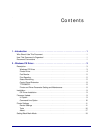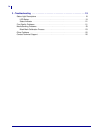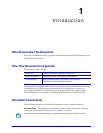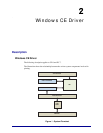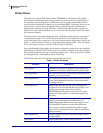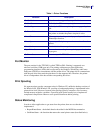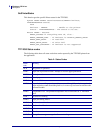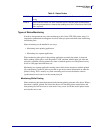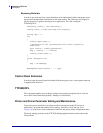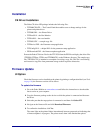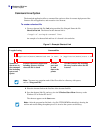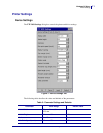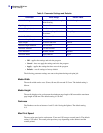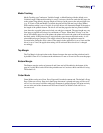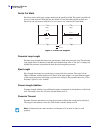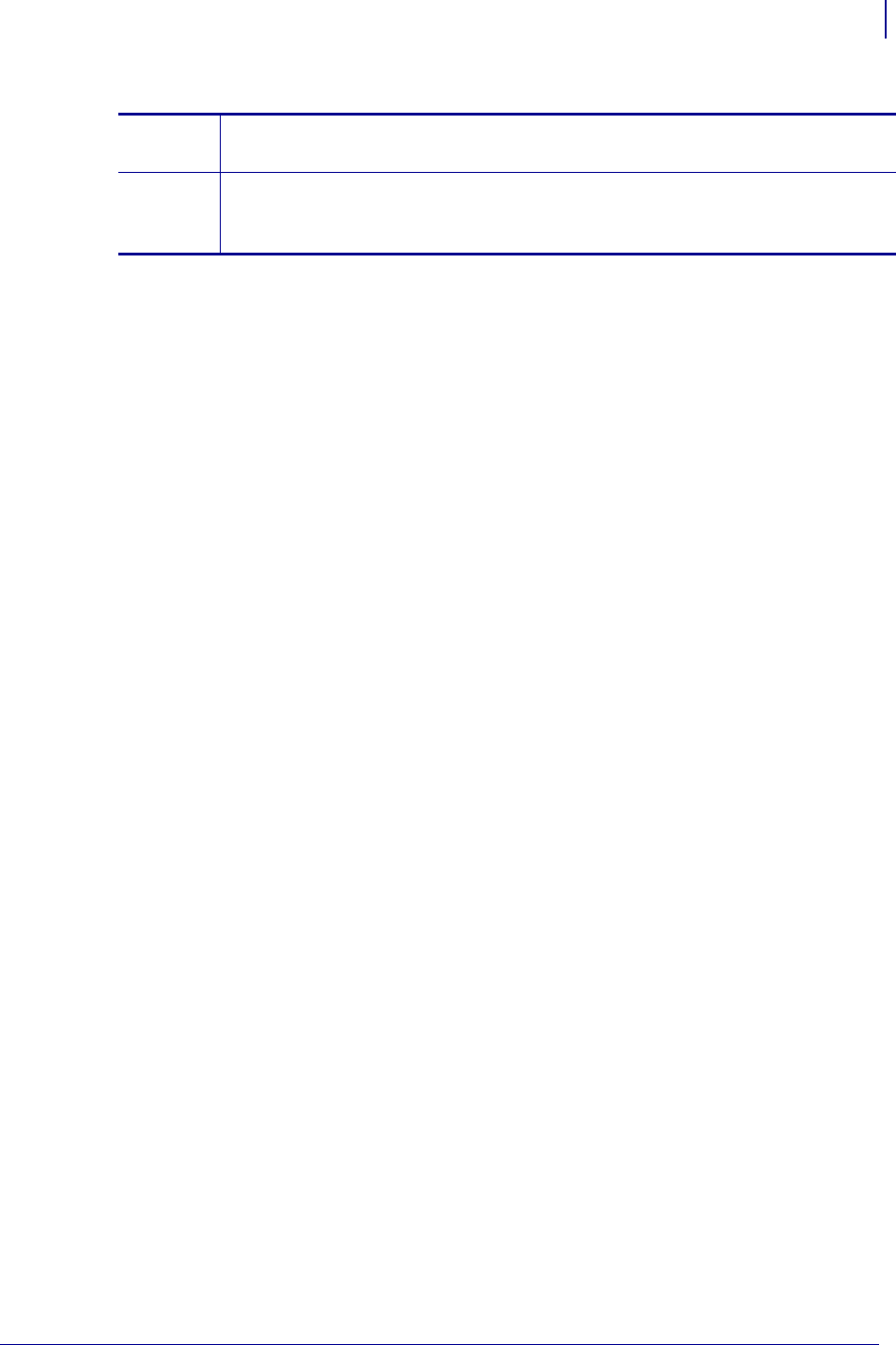
7
Windows CE Driver
Description
4/14/2013 TTP 2030™ Windows CE Software Integrator Guide P1055866-001
Types of Status Monitoring
In order to incorporate the way status monitoring works for the TTP 2030 printer setup, it is
important to understand what happens in a kiosk when you print, and when status monitoring
should take place.
Status monitoring can be handled in two ways:
• Monitoring in the printing application
• Monitoring in a separate application
When monitoring takes place in the printing application, normally the printer is observed
before sending a print job to see if the printer is ‘OK’ and then send the print job. After the
print job is signaled as being printed, the status is checked again to see if the printer has any
errors or if the paper has been taken, etc.
Monitoring in a separate application usually doesn't allow direct interaction with the printed
job so the printer is polled as often as possible to get most accurate information on what the
printer is doing. This is usually very time consuming and care must be taken to achieve
synchronization and control over the current print job.
Monitoring While Printing
Status monitoring has been implemented in the internal printing structure of the driver. When a
document is opened, printed, and closed, the driver will check the printer status before and
after printing and will also react to write errors if any occur. It will then set the printer status
and raise the error event.
NAK 0F Firmware cannot start because no firmware is loaded or firmware checksum is
wrong.
NAK 10 Retract function timed out. If the customer doesn’t take the paper and the printer
clears the presenter due to a timeout, the pending error bit is set and error code NAK
10h is reported.
Table 2 • Status Codes



